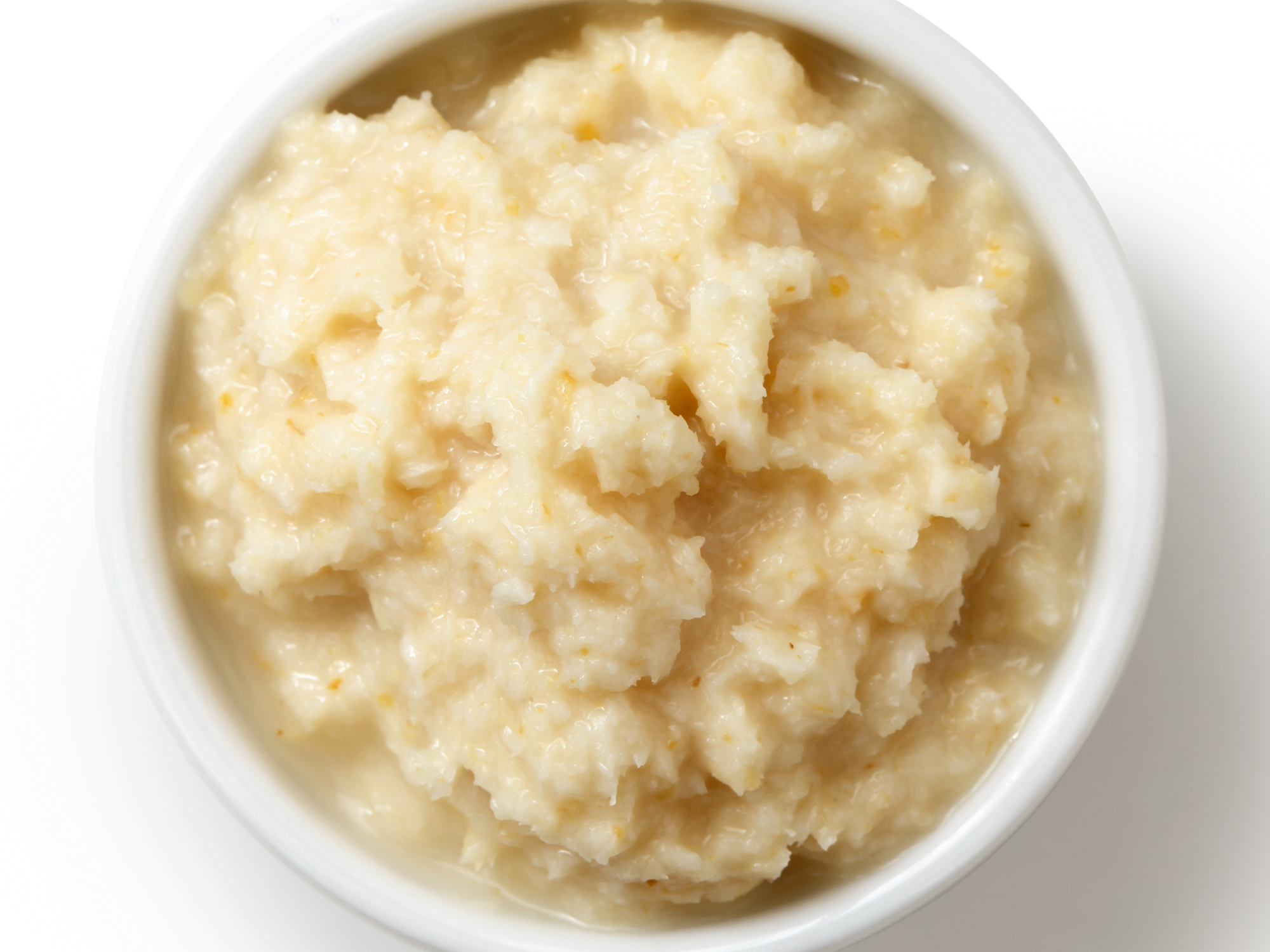Get Easy Health Digest™ in your inbox and don’t miss a thing when you subscribe today. Plus, get the free bonus report, Mother Nature’s Tips, Tricks and Remedies for Cholesterol, Blood Pressure & Blood Sugar as my way of saying welcome to the community!
The “hot” condiment with 10x the cancer-fighting bang of broccoli

Move over, mustard! There’s a new condiment in town. Actually, it’s a really, really old one, and its health benefits have been seriously overlooked.
This root vegetable is a first cousin to broccoli. Astonishingly, though, it has ten times the cancer-fighting power of its superfood cousin.
On top of that, it treats respiratory and digestive ailments and urinary tract infections and contains antioxidants that can reduce the damage done by antibiotics and environmental toxins.
Not everyone likes the strong flavor of this condiment. But if you can acquire a taste for it and use it in your sauces, sandwiches, and salads, you’ll be giving yourself a huge health boost.
Horseradish: the 3,000-year-old cancer fighter
Horseradish has been used for medicinal purposes for centuries. The ancient Greeks used it for muscle aches, cramps, and coughs. Some even thought it was an aphrodisiac.
It wasn’t until the 16th century that it found its way into the kitchen, to be used in sauces and condiments.
Horseradish and broccoli are both members of the Brassicaceae family, and both have an abundance of glucosinolates, compounds that activate cancer-fighting enzymes. But horseradish has ten times the amount of glucosinolates as does broccoli!
A recent University of Illinois study documented the fact that glucosinolates break down to become sulfur-containing compounds called indoles and isothiocyanates. These compounds produce its intense flavor and are also responsible for the activation of cancer-fighting enzymes.
Another recent study from the University of Dundee in Scotland suggests that indoles and isothiocyanates can activate cancer-protective genes while also stimulating apoptosis (cell death).
6 more health benefits of horseradish
As if killing cancer cells weren’t enough, here are more ways a dose of this spicy condiment could improve your health:
- Reduces oxidative stress. Horseradish root has phytocompounds that slow or prevent oxidative stress. As you know, the free radicals unleashed by oxidative stress and inflammation are behind cancer, diabetes, and many other debilitating health conditions.
A 2012 study showed that administering extracts that include horseradish decreased DNA damage caused by zeocin, an antibiotic known to induce oxidative stress.
2. Antimicrobial and antibacterial powers. When its essential oil was used to preserve roast beef and prevent spoilage, it restricted virtually all the bacteria that would have caused it to spoil.
Another study found that it strengthens the action of phagocytes, immune system cells whose job is to fight off infection.
3. Eases respiratory illness. It’s more than the pungent smell of horseradish that clears the respiratory tract. Traditional medicine has long called upon horseradish’s antibiotic properties to treat bronchitis, sinusitis, cough and the common cold.
The smell of horseradish does work to expel mucus from the upper respiratory system, helping to prevent infection.
4. Cures urinary tract infections. Horseradish’s antibiotic properties treat urinary tract infections without the nasty side effects of antibiotics prescribed for this purpose. Sinigrin, a glucosinolate that imparts horseradish’s pungency, is also a diuretic, preventing water retention and thus helping prevent kidney and urinary tract infections.
5. Aids digestion. Horseradish contains enzymes that stimulate digestion, regulate the bowels and prevent constipation. It also stimulates the creation of bile in the gallbladder. (Bile absorbs fat and vitamins, and excretes bilirubin, a waste product of liver function).
6. Relieves pain and inflammation. Probably due to its anti-inflammatory properties, traditional medicine has always used it as a pain reliever. In the American South, it is applied to the forehead to help with headaches.
How to eat horseradish
Clearly, horseradish is not something that you’d eat by the spoonful. But it can be incorporated into many sauces and other foods that enhance the flavor of your meals.
Here are some ideas to start you off:
- Use with sushi
- Add to hummus or guacamole
- Add to your sandwich instead of mustard
- Add a teaspoon to your salad dressing
- Mix with ketchup for a homemade cocktail sauce
Kelley Martin, author of the In the Kitchen with Kelley recipe posts, also has two delicious recipes featuring horseradish you might try:
- Broccoli and horseradish sauce (talk about the cancer-fighting potential in this snack!)
- Beef and asparagus roll-ups
Editor’s note: Discover how to live a cancer prevention lifestyle — using foods, vitamins, minerals and herbs — as well as little-known therapies allowed in other countries but denied to you by American mainstream medicine. Click here to discover Surviving Cancer! A Comprehensive Guide to Understanding the Causes, Treatments and Big Business Behind Medicine’s Most Frightening Diagnosis!
Sources:
- Horseradish contains powerful cancer-fighting compounds, according to NEW research — NaturalHealth365.com
- Cancer-fighting properties of horseradish revealed — University of Illinois College of Agricultural, Consumer and Environmental Sciences (ACES)
- Horseradish: Protection Against Cancer and More — Life Extension
- Isothiocyanates in cancer prevention — Drug Metabolism Reviews












